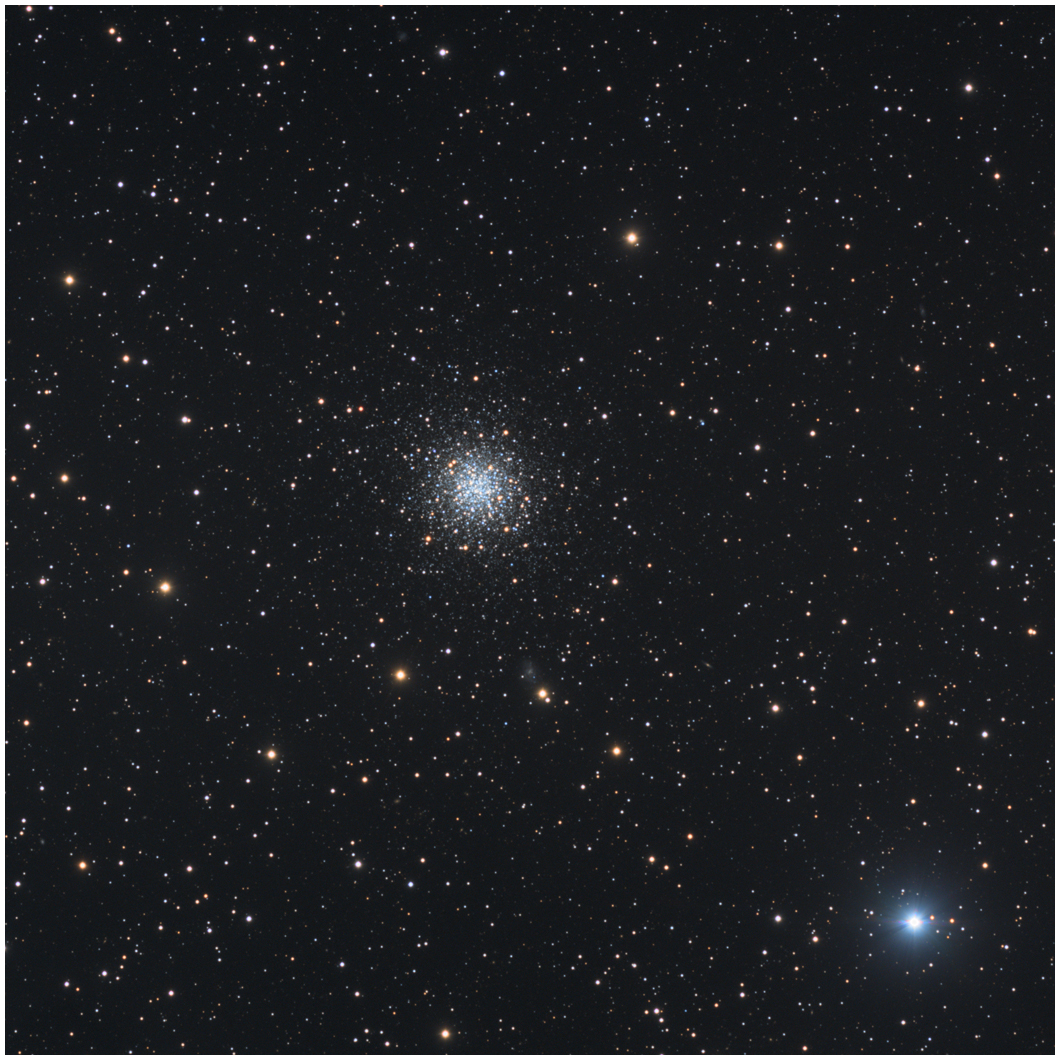
James Janusz 2000 thru 2020 All Rights Reserved |
| Telescope: Astro-Physics 160 EDF | Description:Messier 68 (AKA M68 or NGC 4590) is a globular cluster in Hydra. It was discovered by Charles Messier in 1780. William Herschel described it as "a beautiful cluster of stars, extremely rich, and so compressed that most of the stars are blended together". His son John noted it was "resolved into stars of 12th magnitude, very loose and ragged at the borders". M68 is at a distance of about 33,000 light-years away from Earth and is orbiting through the Milky Way in an orbit which carries it as far as 100,000 light years from the galactic center. It is one of the most metal-poor globulars, which means it has a paucity of elements other than hydrogen and helium. M68 may be undergoing core-collapse, and it displays signs of being in rotation. The cluster may have been acquired by the Milky Way galaxy through accretion from a satellite galaxy. As of 2015 a total of 50 variable stars have been identified in this cluster. Most of the variables are of type RR Lyrae, or periodic variables. Six of the variables are of the SX Phoenicis variety, which display short pulsating behavior. (Wiki) |
|---|---|
| Mount: Astro-Physics AP1600 GTO | Constellation: Hydra |
| Camera: SBIG STX 16803 with Astrodon Ver. 2 Filters | Remotely Imaged With CCD Commander |
| Guiding:SBIG ST402 Guider | Type: Globular Cluster |
| Exposure Data: LRGB Three hours each | Position: R.A. 12h 38m 27s Dec -26° 44' 38.6s |
| Processed using Maxim data aquisition, PixInsight and PhotoShop image processing | Date: May 2020 |
| Data Acquisiton, Reduction and Processing by Jim Janusz | Imaging Location: Cave Creek Canyon Observatory |
-END |
